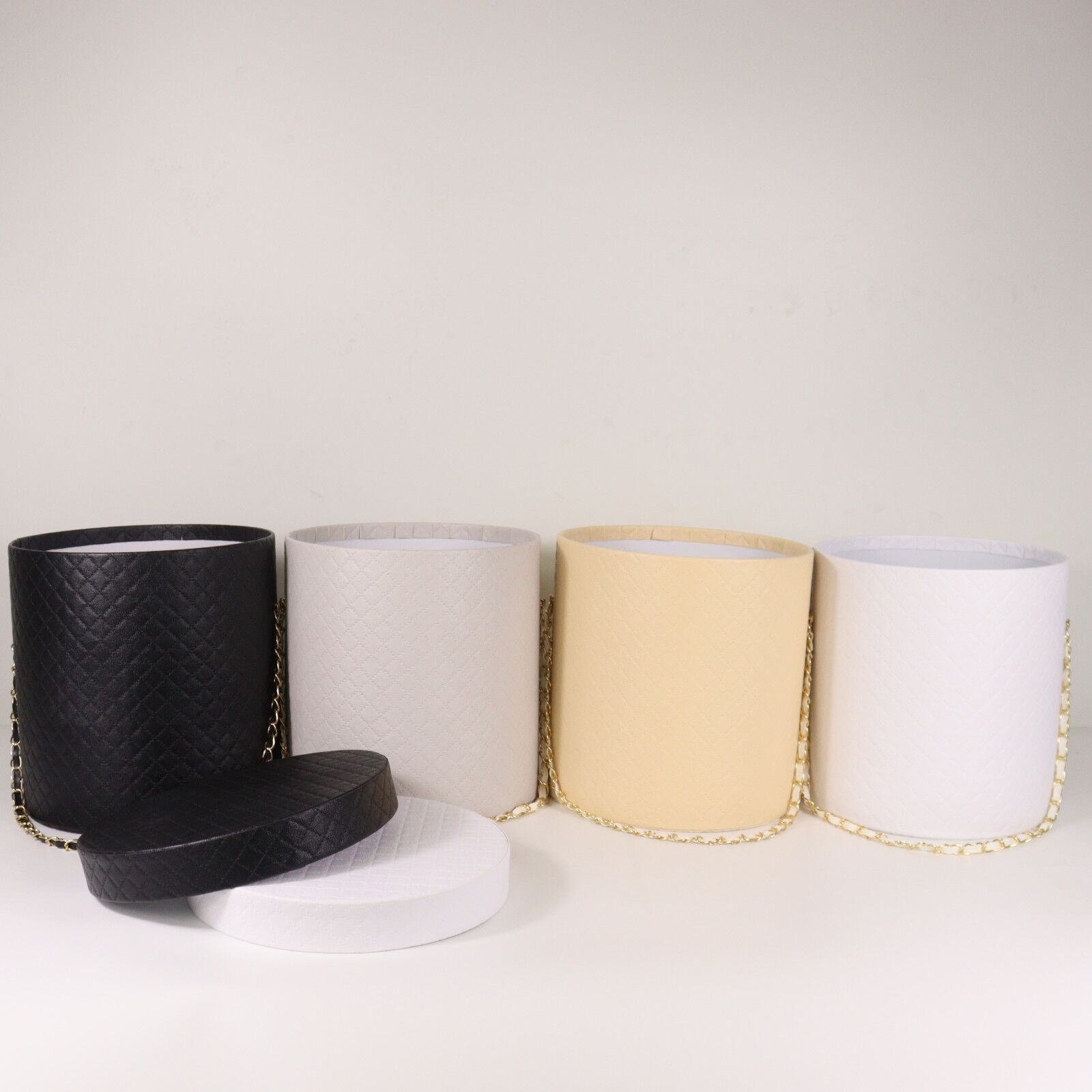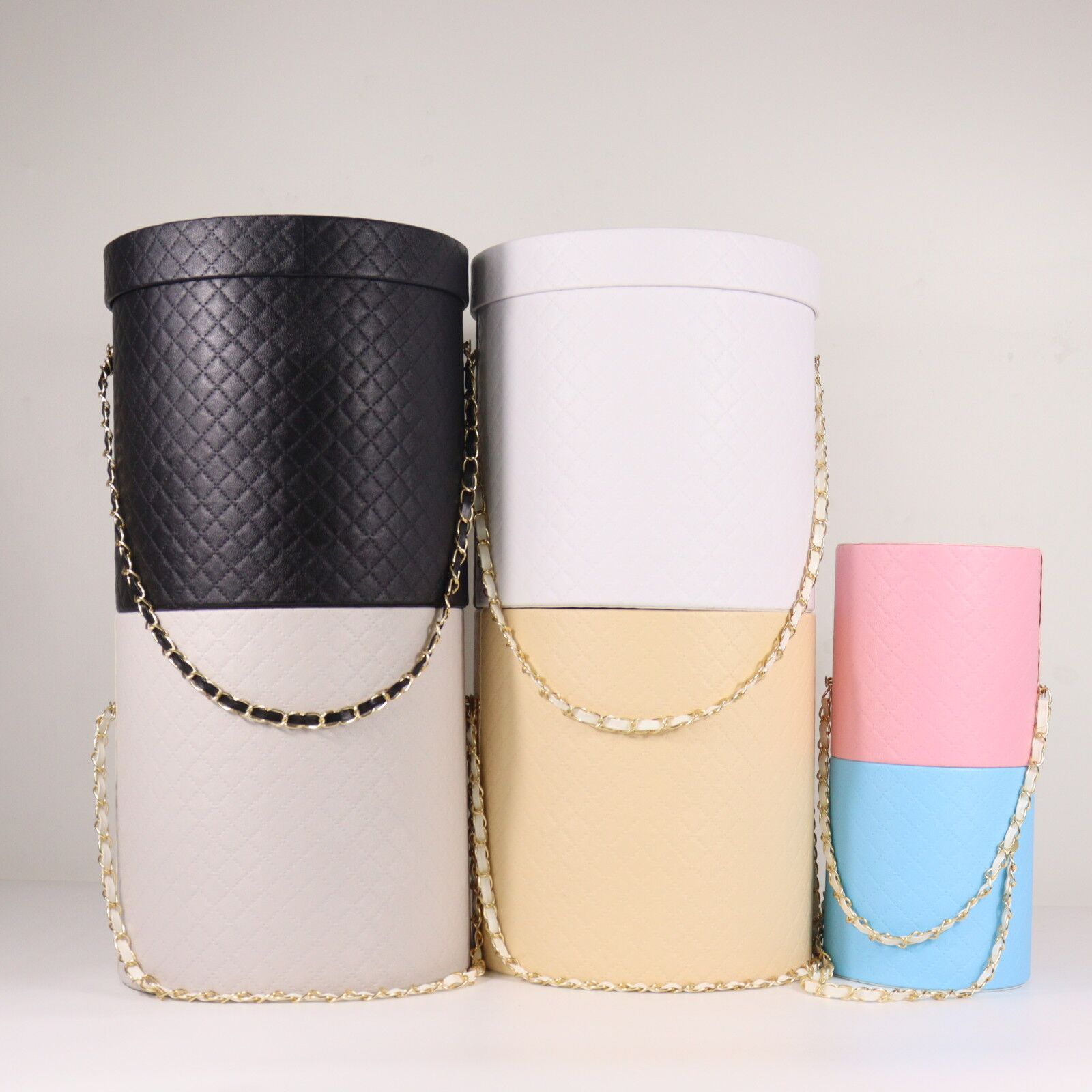- All
- Product Name
- Product Keyword
- Product Model
- Product Summary
- Product Description
- Multi Field Search

Content Menu
● Step-by-Step Guide to Lining Your Flower Box
>> 2. Choose Your Liner Material
>> 6. Create Drainage (for Plastic Liners)
● Tips for Maintaining Your Lined Flower Box
● Choosing Plants for Your Flower Box
● The Role of Flower Paper Box Factories
● Advanced Techniques for Professional-Looking Flower Boxes
>> 2. Customized Drainage Systems
>> 3. Integrated Watering Systems
● Seasonal Considerations for Flower Boxes
● Environmental Impact and Sustainability
● Troubleshooting Common Flower Box Issues
Lining a flower box is an essential step in creating a beautiful and long-lasting floral display. Whether you're using a window box, planter, or custom-made container, proper lining helps with moisture retention, insulation, and overall plant health. In this comprehensive guide, we'll explore the best methods and materials for lining your flower box, along with tips for maintaining your floral arrangements.
Before we dive into the how-to, let's understand why lining your flower box is important:
1. Moisture retention: A good liner helps keep soil moist for longer periods.
2. Insulation: Lining protects plant roots from temperature extremes.
3. Protection: It safeguards the box material from water damage and rot.
4. Drainage: Proper lining allows excess water to drain while retaining nutrients.
5. Aesthetics: Some liners can enhance the overall appearance of your flower box.
To line your flower box, you'll need:
- Liner material (plastic, landscape fabric, coco fiber, or burlap)
- Scissors or utility knife
- Staple gun or adhesive (depending on box material)
- Measuring tape
- Pencil
- Drill with small bit (for drainage holes if using plastic)
- Safety gloves and goggles



Start by accurately measuring the interior dimensions of your flower box. Measure the length, width, and depth, adding an extra inch or two for overlap. This ensures you have enough material to work with and allows for adjustments during installation.
Measuring a flower box
Select a liner material based on your needs:
- Plastic: Excellent for moisture retention but requires drainage holes.
- Landscape fabric: Allows natural drainage and air circulation.
- Coco fiber: Biodegradable and provides good insulation.
- Burlap: Natural look and good drainage, but less durable.
- Felt: Provides good insulation and moisture retention.
Consider factors such as the climate in your area, the types of plants you'll be growing, and the material of your flower box when making your selection.
Using your measurements, cut the liner material to size. For plastic liners, cut a single piece to cover the bottom and sides. For fabric liners, you may need separate pieces for the bottom and sides. Always wear safety gloves when cutting to prevent injuries.
Cutting liner material
Place the liner inside the flower box, smoothing it against the sides and bottom. If using plastic, create a few small folds at the corners to allow for a better fit. For fabric liners, start by securing the bottom piece, then add the side pieces, overlapping slightly at the corners for a snug fit.
For wooden boxes, use a staple gun to secure the liner along the top edge. For metal or plastic boxes, use a strong adhesive. Ensure the liner is taut but not stretched too tight. If using adhesive, allow sufficient time for it to dry before proceeding to the next step.
Securing the liner
If using a plastic liner, drill several small holes in the bottom for drainage. Space them evenly across the base of the box. For wooden boxes, you may also want to drill corresponding holes in the box itself to ensure proper drainage.

1. Water regularly, but avoid overwatering. Check soil moisture levels before watering.
2. Check for proper drainage after heavy rains to prevent waterlogging.
3. Replace the liner annually or when signs of wear appear.
4. Clean the box thoroughly between plantings to prevent disease transmission.
5. Inspect the liner periodically for any tears or damage, and repair or replace as necessary.
Select plants that suit your climate and the box's location. Consider factors like sunlight exposure and box depth. Some popular choices include:
- Petunias: Colorful and low-maintenance
- Geraniums: Drought-tolerant and long-blooming
- Marigolds: Pest-resistant and vibrant
- Lobelia: Perfect for cascading over box edges
- Sweet alyssum: Fragrant and attracts pollinators
- Pansies: Ideal for cooler seasons
- Impatiens: Great for shaded areas
Flower box with colorful blooms
Get creative with your flower boxes! Here are some ideas:
1. Rustic wooden crates lined with burlap
2. Repurposed metal containers with coco fiber lining
3. Window boxes made from reclaimed pallets
4. Vertical flower boxes for small spaces
5. Tiered flower boxes for a cascading effect
DIY flower box ideas
While we've focused on lining reusable flower boxes, it's worth mentioning the growing trend of disposable flower paper boxes. Flower paper box factories produce eco-friendly, biodegradable containers perfect for gift-giving or short-term displays. These boxes often come pre-lined and ready for use, making them a convenient option for florists and consumers alike.
Flower paper boxes from a factory
Flower paper box factories are innovating with materials and designs to create sustainable packaging solutions for the floral industry. These boxes can be an excellent alternative to traditional plastic or ceramic containers, especially for events or temporary displays. Some flower paper box factories are even developing water-resistant paper materials, extending the usability of their products.
For those looking to take their flower box game to the next level, consider these advanced techniques:
Use a combination of materials for enhanced protection and aesthetics. For example, start with a plastic liner for moisture retention, then add a layer of coco fiber for a natural look. This method provides the benefits of both materials while creating a visually appealing finish.
Create a more sophisticated drainage system by incorporating a layer of gravel or perlite at the bottom of your box before adding soil. This helps prevent soil compaction and improves overall drainage, reducing the risk of root rot.
Advanced drainage system
Install a drip irrigation system or self-watering reservoir to make maintenance easier, especially for hard-to-reach boxes. These systems can be connected to timers for automated watering, ensuring your plants receive consistent moisture even when you're away.
Adapt your flower box care routine according to the seasons:
- Spring: Line boxes and plant early bloomers like pansies and primroses.
- Summer: Ensure proper watering and consider shade for intense sun. Add heat-tolerant plants like petunias and verbenas.
- Fall: Plant cold-hardy varieties such as chrysanthemums and ornamental kale. Prepare boxes for winter by adding extra insulation.
- Winter: Protect boxes from freezing with extra insulation. Consider evergreen plants or winter-blooming varieties like hellebores.
Seasonal flower box care
As gardeners become more environmentally conscious, the choice of materials for flower boxes and liners is increasingly important. Consider these eco-friendly options:
1. Biodegradable liners made from natural fibers like jute or hemp
2. Recycled plastic liners made from post-consumer materials
3. Upcycled containers as flower boxes, such as old drawers or wine crates
4. Locally sourced materials to reduce transportation emissions
Flower paper box factories are also contributing to sustainability efforts by producing boxes made from recycled materials or using eco-friendly manufacturing processes. Some factories are experimenting with plant-based inks and adhesives to further reduce their environmental impact.
Even with proper lining, you may encounter some issues. Here's how to address them:
1. Waterlogged soil: Improve drainage by adding more drainage holes or incorporating perlite into the soil mix.
2. Dry soil despite regular watering: Check for liner damage or consider a moisture-retaining liner. You may also need to adjust your watering schedule.
3. Plant wilting: Ensure proper drainage and check for pests or diseases. Consider the sunlight requirements of your plants.
4. Liner degradation: Replace liners annually or as needed. Look for signs of wear such as tearing or discoloration.
5. Algae growth: Ensure proper drainage and avoid overwatering. Clean the exterior of the box regularly.
Troubleshooting flower box issues
To wrap up our comprehensive guide on lining flower boxes, let's address some common questions:
1. Q: How often should I replace the liner in my flower box?
A: Generally, liners should be replaced annually or when signs of wear appear. However, plastic liners may last several seasons if well-maintained.
2. Q: Can I use newspaper as a liner for my flower box?
A: While newspaper can be used as a temporary liner, it breaks down quickly and doesn't provide long-term benefits. It's better to use materials designed for gardening.
3. Q: Are there any plants I should avoid putting in lined flower boxes?
A: Plants with very deep root systems or those prone to root rot may not be suitable for flower boxes. Stick to shallow-rooted plants or those that tolerate container growing.
4. Q: How do I clean my flower box between plantings?
A: Remove old soil and plants, wash the box with a mild soap solution, rinse thoroughly, and allow to dry completely before adding a new liner and soil.
5. Q: Can flower paper boxes from a factory be used as permanent planters?
A: While flower paper boxes from factories are designed for temporary use, some may be sturdy enough for a season of planting. However, they're not intended for long-term use and may degrade quickly when exposed to constant moisture.
By following these guidelines and tips, you'll be well on your way to creating beautiful, thriving flower boxes that will enhance your home or garden. Remember, proper lining is the foundation of a successful flower box, providing the ideal environment for your plants to flourish. Whether you're using traditional materials or exploring innovative options from flower paper box factories, the key is to choose a method that suits your needs and helps your plants thrive.